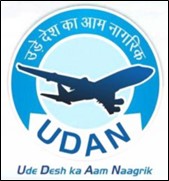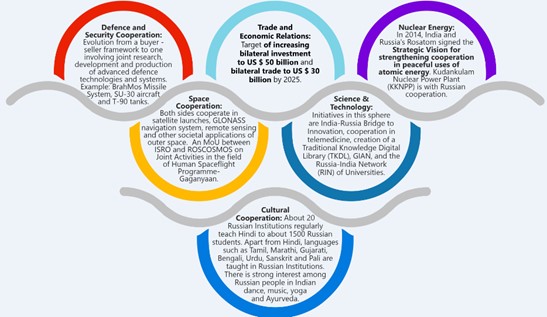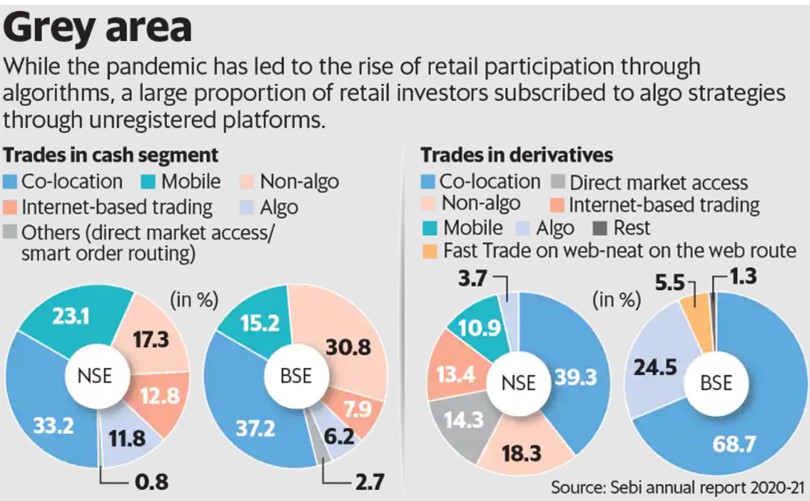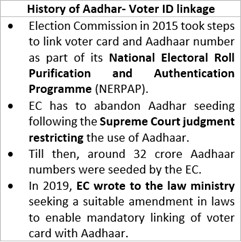Wednesday, 22nd December 2021
India’s new semiconductor policy
In News
The Government of India recently notified new semiconductor policy.
About the News
- In an attempt to attract large investments for setting up semiconductor wafer fabrication facilities within the country to strengthen the electronics manufacturing ecosystem, the Ministry of Electronics and Information Technology unveiled the scheme for setting up Semiconductor Fabs in India.
- This is in line with the National Policy on Electronics 2019 (NPE 2019) to make India a global hub for Electronics System Design and Manufacturing (ESDM) and enable the industry to compete globally.
- The application window starts from January 1, 2022 and is open until the next 45 days.
What are the important provisions of the new semiconductor policy?
- Government will provide up to 50% of Project cost for two semiconductor and two display fabs.
- Support shall be provided for a period of six years. The tenure of the actual fiscal support outflow may be extended based on the approval of the Minister of Electronics and Information Technology.
- Further, for additional support, the government will offer infrastructure support through “Modified Electronics Manufacturing Clusters (EMC 2.0) Scheme for development of infrastructure / Common Facility Centre subject to the proposal satisfying the EMC 2.0 framework requirements.
- The semiconductor fabs set up in India will be supported through purchase preference in procurement of electronic products by the Government under the Public Procurement (Preference to Make in India) Order 2017.
- Additionally, up to 5% of the outlay of the scheme shall be earmarked for meeting the research and development (R&D), skill development and training requirements for the development of semiconductor ecosystem in India.
- Companies / Consortia / Joint Ventures proposing to set up a Silicon CMOS based Semiconductor Fab in India for manufacturing Logic / Memory / Digital ICs / Analog ICs / Mixed Signal ICs / SoCs will be eligible.

Why is a holistic semiconductor policy important for India?
- Import dependency: Presently, India imports 100 percent of its semiconductors (approx. $15 billion in 2020) of which 37% comes from China.
- Geographic specialisation: Semiconductor supply chains are marked by geographical specialisation with 75% of global manufacturing capacity in East Asia. Geographic specialisation creates vulnerabilities emerging due to natural disasters, infrastructure shutdowns or geopolitical events. Therefore, it is critical to develop secure and resilient semiconductor supply chains for industrial growth, digital sovereignty, and technological leadership
- Need of the Global electronics market : Currently valued at around USD 2 trillion ( ₹150 lakh crore), the global electronics market is expected to grow significantly given the increasing penetration of emerging technologies including 5G, IoT, Artificial Intelligence, Robotics, Smart Mobility, Smart Manufacturing, etc.
- India’s Low Market penetration: While the global semiconductor market was valued at ₹33 lakh crore in 2020 and expected to reach ₹75 lakh crore by 2030, the Indian semiconductor market stood at ₹13 lakh crore in 2020 and is estimated to reach ₹4.73 lakh crore by 2026.
- Need for EVs: With India pushing for Electric Vehicles, there is higher dependence on semiconductor chips. For example, in EVs nearly 80 percent of functionality comes from software, including battery optimisation, heat management, performance etc.
Sources:
Radioactive pollution in water
In News
According to a new study, groundwater in as much as 78% area of 73 villages of Karnataka has high and unsafe levels of uranium concentration.
Findings of the study
- For the study, researchers surveyed 73 villages in the eastern part of the state.
- They found that 57 villages had a uranium concentration of more than 30 micrograms per litre (μg/l) while, 48 of them had concentration of more than 60 μg/l. Uranium concentration exceeded 1,000 μg/l in one village.
- In addition to the geological makeup of Karnataka, the researchers concluded that the high uranium concentration is also a result of decline in the groundwater table.

Radioactive Pollution in Water Sources
- Radioactivity is the phenomenon of spontaneous emission of particles or waves from the unstable nuclei of some elements.
- Radioactive elements are naturally found in the earth’s crust.
- Water may be contaminated by natural or anthropogenic causes:
- Natural Causes: Percolation of naturally occurring radioactive materials (NORM) from the soil sediments to the aquifer causes groundwater contamination. Sometimes, magma also releases radioactive gases into the environment. The deposition of these radioactive gases in waterbodies also causes radioactive contamination.
- Anthropogenic Causes: Nuclear weapon investigation, nuclear calamities, nuclear power houses and dumping of radioactive waste are major sources of contamination, while application of radioisotopes in industries and scientific laboratories are the minor sources.
- Radioactive contamination is more prevalent in groundwater as compared to surface water since it is much exposed to radioactive elements found in the rocks.
- A significant concentration of uranium is supposed to be found in the greater salinity of the marine water.
Health effects of ingesting radioactive contaminated water:
- Ingested radionuclides are absorbed into the blood and accumulate in specific tissues that they may damage.
- Immediate, recoverable consequences include damage to skin, lungs, genitals and hair fall.
- Natural uranium induces chemical toxicity, especially nephrotoxicity, which is more harmful than radiotoxicity; whereas radium and radon are thought to induce solely radiotoxicity.
- Genetic effects include ionizing radiation inducing mutations in germ cells (male sperm cells and female egg cells) or germ cells, resulting in structural alteration in germ cell DNA that are passed on to offspring, causing hereditary disorders.
Sources:
5 years of UDAN scheme
In News
The ambitious Regional Connectivity Scheme –Ude Desh ka Aam Naagrik under the National Civil Aviation Policy 2016, completed 5 years recently.
About UDAN scheme
- Objective: The objective of the UDAN Scheme is to connect un-served and underserved airports with big cities through air service. The scheme is operational for 10 years.
- Target: To enable One Crore passengers to travel by air every year.
- Facilities to carriers
- The government compensates in the form of Viability Gap Funding (VGF) to airlines for losses due to low fares. Airport Authority of India has also waived off the airport fee for the same.
- Security, electricity and fire-fighting facilities free of cost.

Milestones Achieved
Under the UDAN Scheme, approval has been given to four phases so far– UDAN 1, UDAN 2, UDAN 3 and UDAN 4.
- The first flight from Delhi to Shimla under the UDAN Scheme was flagged off in April 2017.
- Air service is being provided on more than 359 routes on 59 airports along with 5 heliports and 2 aerodromes. For the first time, helipads were also connected under UDAN 2.
- Helicopter and Sea-Plane service is also included in UDAN 3.
- 70% air traffic load has shifted from 6 metros to small and medium cities.
- Operating cost of airlines has come down by 12-13%.
- Domestic air traffic has seen a 5% increase in passenger numbers from smaller cities.
- Subsidy worth Rs. 1228 crores given to enable passengers to get tickets at cheaper rates.
- Almost 60 lakh people have air travelled at affordable rates under UDAN scheme.
Future Projects under UDAN
- 1000 new routes, 100 new airports, 10 water aerodromes for 28 heliports and sea-planes, 10 airports for North-Eastern states are to be built.
- Krishi Udan Scheme for air transportation of agricultural products.
- Under International UDAN, India’s smaller cities will be directly connected to some key foreign destinations in the neighbourhood.
Challenges Faced
- Non-readiness of civil airports and heliports: Due to unavailability of land and infrastructure, many airports and heliports remain at various stages of completion.
- Unsustainability of operations on certain routes: Government subsidies on regional connectivity routes often don’t make up for the costs borne by the airlines to operate
- Adverse impact of the pandemic on passenger demand on these routes: Due to sluggish demand, price sensitivity is more pronounced in the regional routes, and thus airlines often struggle to recover their costs on regional routes.
Way Forward
Measures from state governments such as reducing taxes on aviation turbine fuel and providing additional incentives for RCS flights could encourage airlines to scale up operations under the RCS.
Sources:
National Mathematics Day - Edukemy Current Affairs
On December 22, 1887 legendary mathematician Srinivasa Ramanujan Aiyangar was born in Tamil Nadu’s Erode. The day is celebrated as National Mathematics Day or Maths Day. Ramanujan was a prodigious Indian mathematician who, despite having no formal training in advanced mathematical concepts, mastered trigonometry at the age of 12 and went on to make great contributions to mathematical concepts such as number theory, infinite series and continued fractions. He received his degree from Cambridge in 1916 and went on to publish several brilliant papers on his subject with Hardy’s help. The mathematician has always fascinated the world by his theorems and other achievements. Ramanujan died at the young age of 32 owing to deteriorating health on April 26, 1920.

Source:
India-Russia ties in a changing world
In News
The 21st India – Russia Annual summit took place recently.
Details of the 21st India-Russia Annual Summit
- A Joint Statement titled India-Russia: Partnership for Peace, Progress and Prosperity was released following the Summit which covers the state and prospects of bilateral ties.
- Coinciding with the visit, 28 agreements were signed in different sectors including trade, energy, science and technology, intellectual property, outer space, geological exploration, cultural exchange, and education.
- An Agreement on Program of the Military-Technical Cooperation from 2021-2031 was signed. This 10 year Defence Cooperation Program outlines the ongoing defence cooperation and future possible cooperation between the two countries.
- The first ever India Russia 2+2 Ministerial Dialogue was also held in New Delhi. Both the sides were represented by their Defence Minister and External Affairs Minister.
- The meeting could not conclude the much anticipated ‘Reciprocal Exchange of Logistical Support’ (RELOS).
- AUKUS and the Indo-Pacific: Russia debunked these new formats calling them “non-inclusive” and violative of international norms.
- Regional Security: Issues such as Chinese incursions in Ladakh and the situation in Ukraine was discussed. The leadership also discussed the evolving situation in Afghanistan, especially the security situation and its implications in the region, the current political situation, issues related to terrorism, radicalisation and drug trafficking etc.
India- Russia Ties: Time Tested Model of Bilateral Relations
- The year 2021 is of prime importance for the bilateral relations in many ways. The completion of 5 decades of the 1971 Treaty of Peace, Friendship and Cooperation and 2 decades of Declaration on Strategic Partnership is symbolic of the long standing and time-tested India-Russia relations characterized by mutual trust, respect for each other’s core national interests and similarity of positions on various international and regional issues.
- 2021 is also special for our Strategic Partnership with the inaugural meeting of the 2+2 dialogue between Foreign and Defence Ministers. This has started a new mechanism to enhance our practical cooperation.
- As the relationship evolved, it gained strength based on five pillars: a) similar political and strategic perceptions of the world; b) intensive military-technical cooperation; c) strong economic bonds; d) deep ties in science and technology; and e) people-to-people and cultural links.

India-Russia ties in a changing world
Areas of Convergence
- Multi-Polarity: New Delhi sees Moscow as an important partner in achieving stable, peaceful and multipolar world order. The regional character is manifested in their cooperation in multilateral forums such as BRICS and SCO.
- Interests in the Indo-Pacific Architecture: India has remained a country having outstanding national interest and it is considered to be the most important actor in the Indo-Pacific region, it has multiple ambitions; Russia, who remained a loyal partner of India for decades, has manifested its growing interests in the Asia Pacific, specifically in the Indo-Pacific region.
- Moreover, India views Russia as an alternative to balance the role of the US, China, because India wants cooperation based on multilateralism and not the dominancy of any single country. Russia engaged in the Asia pacific to increase influence against the US and its allies.
- Success of Strategic Autonomy: Russia does not seek and nor is it in a position to demand any dilution of our strategic autonomy; on the contrary, Russia sees the value of India as an ‘authoritative independent power’. Moreover, India also displayed this in S-400 deal with Russia against fears of US sanctions.
New areas identified for cooperation
Some of the new areas identified for cooperation include Central Asia, the Far East Region of Russia and the Arctic. All these regions face a threat of growing dominance by China which would decrease Russia’s influence in these regions.
- Russia’s Far East is extremely well endowed with natural and mineral resources like oil, gas, iron ore, copper, diamonds, gold, silver, etc. India had extended a Line of Credit of $1 billion in 2019 to explore opportunities for greater Indian engagement with that region.
- The Arctic is a promising region for bilateral collaboration. Russia had invited India to cooperate with it in the region during Indian PM’s visit to Russia in 2019. The region is extremely rich in mineral resources including hydrocarbons and fossil fuels. The region also faces risk of increased Chinese presence which has declared itself as a “Near Arctic State” although no such concept exists in the constitution of the Arctic Council.
- Central Asia: Following the withdrawal of American/NATO troops from Afghanistan, India and Russia have stepped up efforts to address the common challenges that both countries face with respect to terrorism, drug trafficking and other forms of instability that could also impact on the stability of Central Asia.
India-Russia Relationship: Challenges
The broader geopolitical context is increasingly becoming an important reference point in our bilateral relations. These include the assertive nature of China’s rise, India’s strategic partnership with United States as well as the perception of Russia’s own strategic closeness with China. The Indo- Pacific concept and the Quad have brought forth some differences between India and Russia.
- Pak-Russia Rapprochement: Indian Concerns
- Relations between Pakistan and Russia have experienced an improvement in the last few years, especially after the initiation of China Pakistan Economic Corridor (CPEC).
- In response to these developments, India's ambassador to Russia said that "Russia's military cooperation with Pakistan which is a state of sponsoring terrorism as a matter of State policy is a wrong approach and it will create further problems".
- Sino-Russia Entente: Implications for India
- There are multiple areas of common interest between the two emerging powers, and they are coordinating through the UN Security Council, BRICS, and SCO to maintain and strengthen the multipolar world. Both are giving an alternative to the viewpoint of the West.
- The Russia-China growing partnership in terms of defense and arms is not free of costs for India. For New Delhi, this poses real threats and challenges. Russia has started cooperation with Pakistan due to China’s influence despite India’s reservations.
- Russian Engagement with the Taliban in Afghanistan
- Russia was busy to engage the Taliban and bring them to the negotiations table. It has conducted multiple high-level meetings with the Taliban leaders including Troika model.
- On the other hand, India had reservations over this engagement of Moscow with the Taliban.
Conclusion: Futuristic Perspective
- As we contemplate the future, how we navigate some important transitions will help define our further ambitions. India and Russia will definitely see more common opportunities in the regions immediately beyond. New partnerships could also be explored, including in trilateral formats.
- Connectivity will be increasingly central to our interests, whether we speak of the North-South Corridor (INSTC), the Chennai-Vladivostok maritime corridor or the Northern Sea Route.
- India is actively engaging the Eurasian Economic Union for a trade agreement and participating in the endeavours of the SCO and BRICS.
- When it comes to disarmament or technology issues, we seek practical and productive outcomes in multilateral fora. Reformed multilateralism is also in our common interest and we value Russia’s support for India’s permanent membership of the UN Security Council.
- Regional issues like Afghanistan and the Middle-East have seen convergence previously that may be mutually beneficial to continue.
- As an Observer State, India is also interested in deepening its engagement with Russia, the Chair of the Arctic Council, on Arctic issues. Energy, in particular, holds enormous promise as the two nations engage in long-term planning and cooperation.
Questions: Examine the nature of India-Russia ties in a changing world.
Sources:
- 21st India – Russia Annual Summit
- English translation of Prime Minister Narendra Modi's remarks at the 21st India-Russia Annual Summit
- India- Russia Joint Statement following the visit of the President of the Russian Federation
- India-Russia ties in a changing world
- India-Russia Summit: Success of Strategic Autonomy
- How Putin’s Delhi visit has reinvigorated a time-tested partnership between India and Russia
- Russia, a legacy relationship with limitations
- India-Russia summit: 28 agreements inked; Afghanistan, Chinese incursions discussed
- India and Russia: An Investigation of Relational Equations (1991-2020)
- Indo-Russian Strategic Relations under Putin
- Can the Russia-India Friendship Survive in the New Bipolar World?
- The enduring relevance of India-Russia relations
- Russia and India in the Indo-Pacific
- Modernising India-Russia ties
- The four faces of 21st century Asian geopolitics
- India-Russia Relations
- India-Russia ties in a changing world order: In pursuit of a ‘Special Strategic Partnership’
- Bridge the geopolitical distance with Russia
- India-Russia strategic partnership: Factor of stability in tumultuous geo-politics
- Are Indo-Russian Ties the Next Casualty of Great-Power Shifts?
- Russia-India-China Triangle Amid Stormy Geopolitics
- Why Indo-Russian relations continue to remain strong despite divergent geopolitical and strategic drift
- The New Edge in India-Russia Relations: Probabilities
- The external dimensions of India-Russia relations
- Worldview with Suhasini Haidar | India-Russia ties in trouble?
- How India changed direction of its engagement with major powers: From non-alignment to multi-alignment
- Why Indo-Russian relations continue to remain strong despite divergent geopolitical and strategic drift
World's Longest Flexible Battery
This is image of the World's Longest Flexible Battery. Scientists have now developed a rechargeable lithium-ion battery that is in the form of an ultra-long fibre. Researchers have developed a rechargeable lithium-ion battery in the form of an ultra-long fiber that could be woven into fabrics. The battery could enable a wide variety of wearable electronic devices, and might even be used to make 3D-printed batteries in virtually any shape. The researchers envision new possibilities for self-powered communications, sensing, and computational devices that could be worn like ordinary clothing, as well as devices whose batteries could also double as structural parts. The new fiber battery is manufactured using novel battery gels and a standard fiber-drawing system that starts with a larger cylinder containing all the components and then heats it to just below its melting point. The material is drawn through a narrow opening to compress all the parts to a fraction of their original diameter, while maintaining all the original arrangement of parts.

Source:
Controlled Aerial Delivery System (CADS-500)
- Context: DRDO’s R&D lab has recently conducted a flight demonstration of Controlled Aerial Delivery System of 500 kg capacity (CADS-500).
- The CADS-500 is used for precise delivery of payload up to 500 kgs at a predetermined location by making use of manoeuvrable capabilities of the Ram Air Parachute (RAP).
- It uses Global Positioning System for the coordinates, altitude and heading sensors for the heading information during its flight.
- The CADS, with its onboard electronics unit, autonomously steers its flight path using waypoint navigation towards target location by operating controls.
- The system has been developed by Aerial Delivery Research and Development Establishment (ADRDE).

Source:
- DRDO conducts flight demonstration of Controlled Aerial Delivery System | Video
- DRDO conducts flight demonstration of controlled aerial delivery system
Image Source:
Killer Robots
- Context: The recent United Nations talks have failed to open negotiations on “killer robots”.
- Killer Robots are autonomous weapons systemsthat can make their own decisions with little to no human involvement.
- Collectively, these weapons fall under lethal autonomous weapons systems (LAWS), which can include bombs, dog-like robots, and more that can use AI and other digital technologies to make decisions on the battlefield.
- These weapons have no human-operated “kill switch” and instead leave decisions over life and death to sensors, software and machine processes.
- It doesn’t include drones, which are manned remotely by pilots.
- Rights groups have argued that allowing robots to make life-or-death decisions is inhumane and that algorithmic decisions like this aren’t dependable as they could be subject to algorithmic biases, and humans wouldn’t have control over the profiling and decisions robots take which could reduce the threshold for war.

Source:
Image Source:
Chillai Kalan
- Context: With winter solstice, Chillai Kalan, has begun in Kashmir.
- Chillai Kalan is one of the harshest winter periods of 40 days. It is a Persian term which means ‘major cold’.
- It is said the snow during the period lasts longer and replenishes the streams, rivers and lakes of Kashmir.
- The bone-chilling cold conditions is followed by a 20-day-long ‘Chillai Khurd’ and 10-day-long ‘Chillai Bacha’.
- While Kashmir's mountains remain covered in snow for weeks afterwards, the period from December 21 to January 31 is generally the coldest.

Source:
- Chillai Kalan, harshest 40 days of winter begins in Kashmir: Interesting facts to know
- In Pics | Chillai Kalan, the 40 harshest days of winter in Kashmir, starts December 21
Image Source:
Smartphones- contributor of e-waste
- Context: Smartphones have noted to contribute to 12% of global e-waste according to research report by Counterpoint.
- Observations of the Report:
- Smartphone production alone contributes about 80-90% of carbon emissions by the device (A mobile phone has over 60 different metals, including rare earth metals that can contaminate soil and water if not disposed properly).
- Demand for mobile phones have increased mining activities for these metals, which adversely impact the environment at the extraction stage itself.
- High consumption has already led them to be listed as ‘endangered metals’,
- "In the discarded e-waste, most of the devices containing lithium-ion batteries (mostly smartphones) pose a significant risk to the environment.
- During the 2020-30 decade, 40% more electronic waste will be generated but the corresponding global e-waste recycling rate will be only 20%.
- India along with the US, the UK, China and Japan are the highest e-waste generating nations.

Source:
- Smartphones contribute to 12% of global e-waste, report says
- Smartphones contribute to 12% of global e-waste, report says
Image Source:
Are jobs really being created?: HBL
Essence: The article highlights the issue of contrasting picture presented by varied surveys like CMIE, NSSO and EPFO with respect to the employment level in the country. As the data when compared or kept together presents a varied picture. Moreover, the data on employment exchange couldn’t be banked upon as it just shows the demand for work and not how many of them are actively employed.
Hence there is a mixed picture on job creation. If we talk about the organized sector the employment level has dropped for which the government is taking steps but for unorganized sector there is no clear indication. One thing which can be said with certainty is growth has to be there in the economy if employment has to be generated. Also, one of the best indicator to show that the jobs are increasing is that there should be simultaneous increase in the consumption level. If the consumption is not increasing then the figure of job creation could be doubted for.
Why you should read this article?
- To understand how different sets of data on employment provides a varied picture.
- To understand the level of job creation in various sectors.
- To understand why it is difficult to assess the level of job creation in unorganized sector.
Source:
The biological diversity amendment bill-Ayush-climate debate: HT
Essence: The article talks about the promotion of Ayush industry and the related concerns arising out of unabated use of natural products from biologically preserved areas.Over the years AYUSH Medicine (Ayurveda, Yoga, Naturopathy, Unani, Siddha, and Homeopathy) have shown promise. The Ayush industry has a current turnover of $18.1 billion. The market size of the Indian Ayush industry as a whole has grown by 17% during 2014-2020.
In order to promote Ayush industry, the recently introduced Biological Diversity Amendment bill 2021 proposes to exempt Ayush practitioners from intimating biodiversity boards before accessing biological resources or traditional knowledge.
The bill has sparked concerns as it was introduced without seeking public comments as required under the pre-legislative consultative policy and that it should be involving forest and indigenous communities before being passed.
Why you should read this article?
- To know the Ayush Industry’s needs and the concerns.
- To understand the concerns of indigenous communities and biodiversity boards due to change in the provisions as proposed by the bill.
Source:
Transforming denial into deliberation: The case of manual scavenging: ORF
Essence: Manual scavenging has its origins in India's historical system of hierarchy and exclusion: the caste system, which explains why the bulk of the labourers are from Scheduled castes or Dalits. According to several research, manual scavenging workers face a variety of challenges, including disease infection, low earnings, and social marginalisation, all of which worsened during the COVID-19 pandemic. Even though several laws have been introduced to provide the group with the rights they deserve, there has been no significant improvement in the situation have been noticed. To make the necessary improvements, the government should build more environmentally friendly toilets, such as bio toilets used by Indian Railways (IR) recently. Alternative employment opportunities like- MNREGA and other social security programmes could be linked to the 2013 Scavenging Act. These manual scavengers will be obliged to continue their decades-long painful activity, as the economic recession worsens due to COVID-19, resulting in an increase in unemployment. If immediate action is not done, all of the past benefits will be lost.
Why should you read this article?
- To comprehend the challenges surrounding manual scavengers and why, despite numerous regulations and schemes, we have yet to solve the problem.
- To understand what steps can be made to address the problem.
Source:
An Inspirational Journey to Success
Background
- Clearing UPSC is the dream of many, but only few succeed in the journey due to the perseverance and grit that show towards the examination.
- Tough times makes one more resilient and motivates him/her to achieve the dream that he has seen for himself.

Inspirational story from Himanshu Gupta’s life:
- Born in a family with modest background, he saw the struggles that his father went through for their survival.
- He had to travel 70km daily to reach his school and had a dream to work with grassroots organisations and bring about a direct change in the society.
- He spent considerable time while in travelling and gathering practical experiences. It was his curiosity that led him to learn.
- His hard work bore the fruit of success and he qualified as an IAS officer.
- His father still runs a general store in Bareilly but now he has the satisfaction that his son has achieved so much.
Quote:
“A dream does not become reality through magic; it takes sweat, determination, and hard work.” - Colin Powell, former U.S. Defense Secretary
Source:
Share the article
Get Latest Updates on Offers, Event dates, and free Mentorship sessions.

Get in touch with our Expert Academic Counsellors 👋
FAQs
UPSC Daily Current Affairs focuses on learning current events on a daily basis. An aspirant needs to study regular and updated information about current events, news, and relevant topics that are important for UPSC aspirants. It covers national and international affairs, government policies, socio-economic issues, science and technology advancements, and more.
UPSC Daily Current Affairs provides aspirants with a concise and comprehensive overview of the latest happenings and developments across various fields. It helps aspirants stay updated with current affairs and provides them with valuable insights and analysis, which are essential for answering questions in the UPSC examinations. It enhances their knowledge, analytical skills, and ability to connect current affairs with the UPSC syllabus.
UPSC Daily Current Affairs covers a wide range of topics, including politics, economics, science and technology, environment, social issues, governance, international relations, and more. It offers news summaries, in-depth analyses, editorials, opinion pieces, and relevant study materials. It also provides practice questions and quizzes to help aspirants test their understanding of current affairs.
Edukemy's UPSC Daily Current Affairs can be accessed through:
- UPSC Daily Current Affairs can be accessed through Current Affairs tab at the top of the Main Page of Edukemy.
- Edukemy Mobile app: The Daily Current Affairs can also be access through Edukemy Mobile App.
- Social media: Follow Edukemy’s official social media accounts or pages that provide UPSC Daily Current Affairs updates, including Facebook, Twitter, or Telegram channels.





